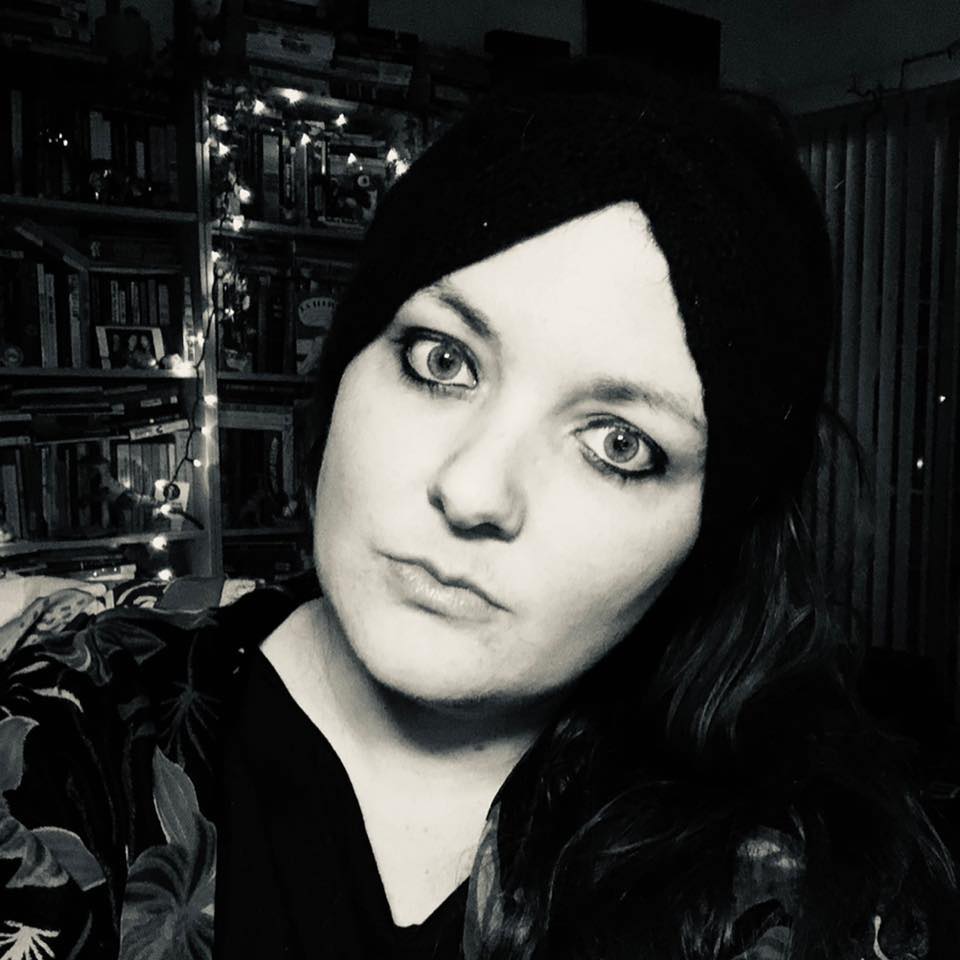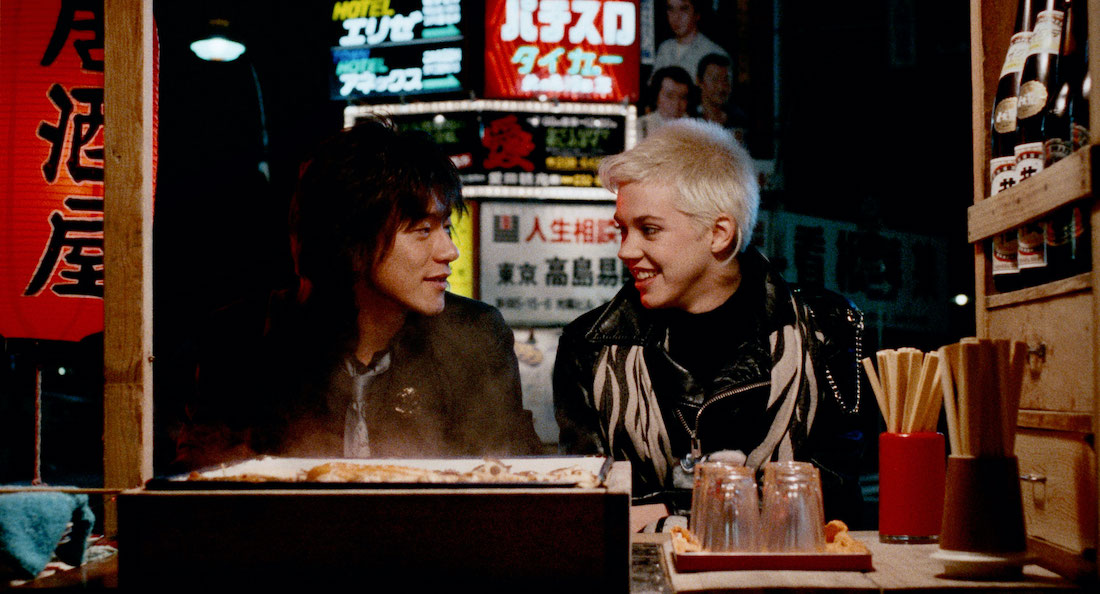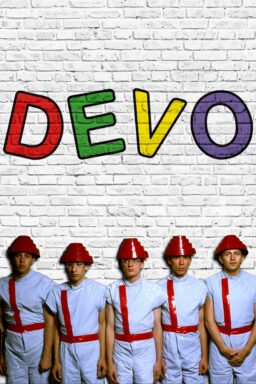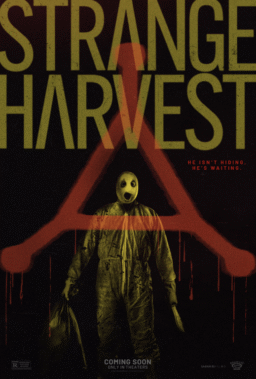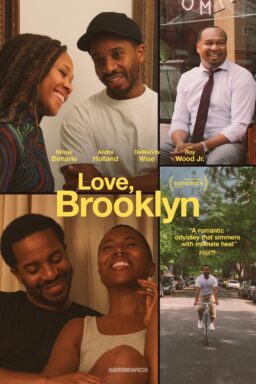Fran Rubel Kuzui is probably best known for directing the 1992 film “Buffy The Vampire Slayer,” starring Kristy Swanson, Donald Sutherland, and Luke Perry, and was integral to getting the television series made. Over the decades, she’s done everything in the industry, from working as a script supervisor, distributing the films of Jonathan Demme and Spike Lee in Japan with her husband Kaz Kuzui, and even mentoring Trey Parker and Matt Stone before producing their 1997 film “Orgazmo.”
But you might have missed her debut feature, 1988’s “Tokyo Pop,” whose distribution was derailed by two separate companies going bankrupt. The film stars Carrie Hamilton as a wannabe rocker named Wendy who travels from New York City to Japan on a whim, hoping to make it big. Culture shock ensues, and just as she’s about to hit rock bottom, Wendy finds her footing with a rock ‘n’ roller named Hiro (Red Warriors frontman Diamond Yukai), whose band is also looking for their big break.
Thanks to donations from Carol Burnett (Hamilton’s mother) and Dolly Parton, “Tokyo Pop” is now seeing a new life with a 4K restoration by IndieCollect’s Jane Fonda Fund For Women Directors and distribution from Kino Lorber.
For this month’s Female Filmmakers in Focus column, RogerEbert.com spoke to Kuzui over Zoom about her film’s second life, its origins in both the Japanese economic bubble and the New York independent film scene of the 1980s, and what it’s like to be part of a generation of female filmmakers who can look back at their films with perspective.

How did this new restoration with IndieCollect come about?
I made the film 35 years ago, which when I think about it, I can’t believe it. I was at a screening at MoMA, and I introduced the screening by saying I had actually restored a Yiddish film just before I made “Tokyo Pop.” Back then, I went to see it, there was a filmmaker who seemed ancient to me, and he said, “I can’t believe I made this film 50 years ago, and now here it is at the Museum of Modern Art, and I’m showing it to you.” And here I was at MoMA showing my film at 35! Time is so circular.
So after I made “Tokyo Pop,” the distributor went bankrupt right after the release of the film and even before it came out on VHS. They did nothing with it. Then Lorimar, who released the VHS, also went bankrupt. There was no one who took care of [the film], for I guess, the 25 years that it was licensed to them, even though there was no them there.
I didn’t know what to do in a case like this. And then, about ten years ago, my lawyer reminded me that the film rights had reverted to us. And I just didn’t know what you do with an old film at that point. Some people had approached me, but I wasn’t very clear about what to do. Then in 2019, the Japan Society was doing a series of films that were made in Tokyo, and Kazuaki Watanabe, who was head of the film program there at the time, found a print of the film. I didn’t even have a print! I had nothing. And I had a poster on the wall. He found a print at the Academy archives and said that they were going to screen it, and would I like to come to it? I said, well, heck, yes. I was in Japan, and I came to New York, and it was a wonderful screening.
At the end of this screening, the amazing Sandra Schulberg, who was the head of IndieCollect, who I’ve known for years and years, stood up and said, “I’m going to restore your film.” She said she volunteered to do it as part of the Jane Fonda Fund For Women Directors, which I knew nothing about. Afterward, she came up to me, and we talked about it, and I went, “Wow, that’s great.” That was November 2019. We all know what happened after that before she had a chance to even start working on it.
So in January 2022, I contacted her and said, “I guess this is the time to go do it.” It’s very hard to do things like this, but she said she would try to raise the money. I said I had an idea, and contacted Carol Burnett and also Dolly Parton, who I’ve been working with for many, many years, and they both said they would pitch in the money. So that’s how it started.
I’ve mentored a lot of filmmakers, and I always say to young filmmakers, I think every film has its own life. It has its own kind of existence. People who are trying to get their movies made, they spend years. Sometimes they have a script, and they never get it made, and then all of a sudden, it takes on its own life, and suddenly it gets made. That’s how “Tokyo Pop” got made. I mean, I tried. I had thought of making it for a very long time. Then all of a sudden, it was its time. I think the same thing happened with the restoration. It was just the right moment to do it after all those years. It just happened seamlessly.
You had already been in Japan for a few years at the point that it was made, correct?
I’d been going back and forth since 1977.

During those ten years you had been visiting the country, the economy was hugely changed. Was that part of the inspiration behind what you wanted to capture with this film?
It really came from the bubble era. When everything was bubbly. There was just money for everything. My husband, Kaz Kuzui, and I started a film distribution company. Our friend called and said, “We have this movie ‘Stop Making Sense,’ and we can’t seem to sell the video. Do you want to release it in a theater?” I was kind of like Mickey Rooney. I turned to Kaz and said, “Let’s put it in a theater; we’ll have a show!” And literally, Kaz went to a theater and convinced them to show at one time at night after the theater closed. We stood on street corners handing out flyers for it ourselves. And it turned into a huge, huge hit. It showed at nine o’clock at night because, at that point, the movie theaters would close at nine o’clock. “Stop Making Sense” became such a huge hit that people would pay to just stand in the lobby and listen to it and dance. That’s how we became film distributors.
That was in August, and the next May, we had gone to the Cannes Film Festival, and we were walking down the street and Spike Lee—we heard somebody scream, “Yo yo, Fran and Kaz! What are you doing?”—and we turned around, and it was Spike Lee. He was there with “She’s Gotta Have It,” his first film. So we said, “Spike, what are you doing here?” And he said, “I made a movie.” And we said, “Oh, we’re gonna be film distributors. Can we have your movie?” and he said, “Yeah! I’ll just tell the sales agent to give it to you.” Which is what he did.
The film world was like that. Scrappy people. Kaz and I have always been filmmakers. I was a script girl, and he was a First A.D. And that’s how we met each other. The ’80s was a time when you could just go and do crazy things like that. The film came from that, and it came from the New York indie scene.
Yeah, you can feel the New York sort of No Wave scene in its bones.
Jim Jarmusch was at our house playing with robot toys, and we would go to parties and run into the Coen brothers and talk about the film. It was just that kind of time.
You mentioned “Stop Making Sense,” which is obviously a music film just like “Tokyo Pop.” I love the various facets of music that are in it. Wendy’s underground band she’s with at the beginning, with a vapid lead singer who is not interested in what she’s trying to do at all. Then there’s Hiro, who loves Elvis and Sinatra, and Hendrix. There’s a Bob Marley-themed bar. The various versions of “Home on the Range” that Wendy sings. Can you talk about the musical elements of the film?
I’ll tell you a kind of funny story. This film was really inspired by “The Harder They Come,” because it’s my favorite film ever. What I love about it is how the music is integrated into the storytelling. And it’s about singing. It’s a story about singing. There’s the underlying stories, of course, but it was my inspiration for making the film.
All the time that we were making the film, I kept saying to Yukai that this film is going to show at the Cannes Film Festival, and we’re gonna go to France, you, me and Carrie, and I’m going to take you to the top of the Eiffel Tower, and I’m going to just turn to you and go, “Anything is possible if you really want it, and try and try.” So we would sing that on the set. We would have a great time. Then the film was invited to the Cannes Film Festival, and Carrie came from LA, but I waited for Yukai to come from Tokyo. I was in Paris, and Carrie had gone on to Cannes. He arrived that day. I met him when he came from the airport, and I said, “Are you ready?” and we went to the top of the Eiffel Tower. I said, “I promised you we were coming here. And I was going to tell you anything is possible.”
Hand to God, this is a true story. When we came down from the Eiffel Tower there was this big billboard right in front of the entrance to the Eiffel Tower, and it said Jimmy Cliff live and the name of the club. It was that day. Jimmy Cliff live! We got on the metro, and we went to the club, and there he was, and he sang, “You Can Get It If You Really Want.” It was so weird, but the film has that kind of life. I was inspired by that kind of feel to it, and that’s what I tried to put into it.
Kaz’s best friend was a music promoter at the time, which was how I met Yukai. We had a lot of friends who were musicians. I was very, very into the music scene and a lot of rock and roll. At the time I aspired to be very hip, which never sort of came to pass. But I think I asked Jim Jarmusch who would be good to help me with the music and he introduced John Zorn. He suggested Kotogawa Rin and Papaya Paranoia. He brought a lot of those edgy band people. They just kept getting attracted to the movie. I don’t know how else to put it.
But I will tell you that I actually met the Jamaican Ambassador a few months ago. I told her the whole story, and she contacted Perry Henzell, the director of “The Harder They Come,” his wife, and his family, and they contacted me. They’re coming to the screening in Los Angeles in a couple of weeks, and then we’re trying to do a screening of “Tokyo Pop” and “The Harder They Come” in Jamaica.
I wanted to ask a little bit about some of the locations that you captured in the film. In particular, I’d really love to know about the shop with the mechanical crab. I don’t know if it’s a restaurant or what, but the first time I watched the movie, I rewound it to look at the crab a few times. I love the whimsy of it.
It’s a chain of restaurants, and they all have crabs. That’s the bubble! Who would build something like that now? That was kind of what I was reacting to. The first film we really distributed was “Wild Style.” We brought 35 kids from the South Bronx to Tokyo and did all these hip-hop shows and everything like that. Watching their reactions to things like that that made me know there was a film and a story because I was having very similar reactions to it.
Also, the person she meets there, who gives her directions and tells her she’s going to have a good time. Nobody ever focused on those people in Japan, but I loved the drag scene in Japan. I was trying to just combine all these things that existed under the surface, that even Kaz didn’t know were there until I would say, “Oh, we got to use the crab,” or “We need drag queens,” or “I want to film in a bamboo forest,” “I want to go to a hot springs.” There were a lot of places like that because Japanese people didn’t think about those. They were really very forward-looking. And it was a bubbly time. They wanted glitzy things. They wanted David Byrne. But I wanted to show all this stuff.
I still don’t speak Japanese all that fluently, and because I couldn’t speak Japanese fluently, I didn’t really immerse myself intellectually in the culture. I existed very much like a 14-year-old. I loved all the anime and anything that a kid would love. Because you could understand that without speaking the language and like Doraemon was my guy. I loved all of that because it was very visceral. And you didn’t really have to have to interact with it using language to get it. Sailor Moon, which eventually became Buffy for me, is the empowered female. So most of the things I was always interested in came from a very 14-year-old perspective.

I think you can feel that sense of wonder in the film without it feeling voyeuristic. You also really capture what it’s like to be someone in a land you’re unfamiliar with for the first time. As someone who travels a lot, it’s always a balance of being overwhelmed by how much I love new places and also terrified I am in them. Which is something Carrie projects so well in her performance. How did she get involved?
I was just thinking about that, as you were saying that, you know, so much of it was Carrie and her incredible curiosity. My parents took me to see my very first play at a theater when I was a kid, and it was Carol Burnett in Once Upon a Mattress. I remember everything about sitting in the audience and watching it when it was finished. It wasn’t that I wanted to be an actress at all. I just remember when it was finished saying to myself, “I don’t know what this is. But this is what I want to do. This is what I want my life to be.”
Aww.
I told Carol the story, and she said the same thing, “Aww,” and that was how we started communicating with each other about the restoration. But rewind a little bit. When the video company Spectrafilm agreed to finance the film, they said, you have to have somebody who’s famous, and if you can’t, then get a relative of somebody who’s famous, and we’ll make the film. So I went to the casting directors, Ellen Lewis and Julie Alter, and said we needed the relative of somebody famous. They came to me a few days later and said this is Eric Roberts’ sister. What do you think? And this is one of those things you never forget. There’s no way to forget this. I remember looking at it and going, “It doesn’t really look right for the part.” Just because she’s Eric Roberts’ sister, that would be no reason to cast somebody who doesn’t look right for the part. I still have that headshot as a reminder to keep an open mind.
That’s great.
We were not finding anybody, and one day, I remembered, I had seen a picture of Carol Burnett in People with her daughter. I had it somewhere and showed them the picture and said, “He’s an actress. She’s on ‘Fame.’” And it was Carrie. They went, “That’s a no-brainer. Let’s just get Carrie.” They contacted Carrie, and I took the rent money and flew out to LA to meet her. I just walked in and sat down, and went, “Hi.” And she went, “Hi,” and then she said, “When do I leave?” I never even had to discuss it. We just met each other, and it was right. We knew we were collaborators. Carrie was not only an actress in the film; she really was a collaborator in making the film. We would get to a location and just stand there and laugh. We would talk about it with Yukai, and the three of us would talk about the scene and the things in it.
There’s a lot of hostess bars in mid-century Japanese films in particular. How did you settle on that being Wendy’s job in the film?
In the ’80s, if you went to Japan, and especially if you didn’t speak any Japanese, there were only two things you could do, particularly as a female, and that was work in a hostess club or teaching. And it was really not much else you could do. Women didn’t work. So given that there was no market for women to join the workforce, the only thing that foreign women could really do would be work in a hostess club or teach English. So it was very clear that she would work in a hostess club. When she goes to Mickey House, everyone says they work in a hostess club.
Hostess clubs in the ’80s were pretty benign, but as someone supportive of women in the ’80s, I had a lot of trouble with it. I had a lot of trouble resolving for myself that these women would do that. The way that Japanese women would allow themselves to be objectified like that. But then I realized there was no other job available to women at the time where you could make that kind of money. There were no women lawyers, no women in executive positions or anything like that. That was the most money that you could make. So a lot of Japanese women would do that.
Then I realized there was a lot of sense of humor in it. There was a lot of humor in how weak the men were who frequented these clubs. Who’s gonna pay me $100 to sit and drink watered-down scotch and look at me? So I realized that those women were kind of empowered in their own way, which was very Japanese, which we, as Western people, didn’t understand at all. So I tried to look at the hostess clubs in that context. Her working there was for me very much in that context, like when she goes to try to audition for the front of the band. Yeah, they were objectifying her too. I mean, that was the role of women. There were very few women rock stars; then, it was mainly men. The position of women was extremely different from what it is today.

Have you found that this new generation of younger viewers who saw “Tokyo Pop” through rep screenings and this new restoration is still relating to the film?
I actually am very surprised. It hasn’t been shown to too many people, but when we showed it at MoMA, I was surprised that almost half the audience was your generation. I think it’s a pretty universal story. Now, when I made the film, I related to the character of Hiro. I saw myself as Hiro when I wrote the film and made the film, and Wendy was Kaz. Wendy, who realizes it’s important to sing your own song, was really Kaz encouraging me to make the film. I really wanted to make my first film. I’d gone to film school, and there weren’t many women directors then.
One day, he woke up and said, “I have a really, really big surprise for you,” and told me to pack a bag. I thought we were going on vacation, that we were going somewhere great. We went downstairs, and we got in a taxi, and five minutes later, we pulled up in front of a small little hotel, and we went into the hotel, and we went to the room, and there was a bed and a desk with a typewriter on it, because there were really no computers then. And he said to me, “I want you to stay here for a week and write your script. Don’t call me because I’m not going to take your call, and I’m not going to come see you. And you can order room service, or there’s a restaurant downstairs, or here’s a lot of cash, and you can go out whatever. And then, in a week, I’ll come and get you, I hope you have a script.”
And that’s exactly what he did. He just left me there. And I stayed there for a week and wrote the script. And I really saw myself as Hiro in all of that, where I was being encouraged to have my own voice and to live my own reality, which at that time, people didn’t talk about, you know, being your authentic self or living your reality. Nobody ever talked about that. And I was so struck by that. That’s what the film is about for me. When they showed it at the Japan Society, somebody during the Q&A said to me I was Wendy, and I never thought about it that way, but seeing it now, of course, I’m Wendy. But when I made the film, I didn’t realize that it was me. So that was the revelation of putting the film on the shelf and not seeing it for 30 years. When I saw the film again, I realized her story is my story, but I hadn’t seen it that way.
I feel art comes out of you, and you aren’t in control of it. Like you’re the medium for it to come out, but it’s beyond you. That’s why I love movies so much. It really is beyond everybody.
Well, I hope it is. And I hope it stays that way. I hope your generation can enjoy this film because it’s very much about my generation and about being authentic and about being yourself, and about expressing yourself from the inside out and not from up here. That film really never came from my intellect. It just came from whatever. Which I think you get to do once, and I don’t know how many times you get to do that.
Are there any female filmmakers that you think readers should know about or that you just really enjoy?
I actually have a very favorite Japanese filmmaker who is a woman. I think she is extremely underappreciated or under-acknowledged, although she does have films that always go to film festivals. I don’t think that they get a wide enough release. We have lunch or dinner every month or so and sit and talk. Her name is Naoko Ogigami.
She is fiercely independent, and she really describes a lot about Japanese women from a Japanese woman’s perspective. I don’t think you’ve ever seen a Japanese film where women are described from a woman’s perspective as well as her films. She made three films I really love: “Toilet,” “Kamome Diner,” which I think is one of her most successful films, and “Close-Knit,” which I really, really hope someday somebody remakes in English because I think it’s got great ideas about femininity. It has some ideas in there that men would never talk about.
I really admire her, and she and I just have these, you know, all-night dinners. Sometimes we really get into the weeds. We talk about filmmaking and what you do and don’t do in a film about women. And so if I was going to want to highlight anybody, it would be her because I really appreciate her work. And it always gets a very small audience
I saw her film “Riverside Mukolitta” at the Japan Society’s festival Japan Cuts: The Future is Female Iast year.
I actually hope with the release of “Tokyo Pop,” I can highlight that none of this would have happened had Kazuaki Watanabe not found that print for that screening. Nobody knew that it was at the Academy. And I think their mandate is to support Japanese culture, and I hope they get some recognition because this would never be happening had they not shown this film. So I’m very grateful to them for that.
Also, we’ve been talking about women and women’s films. I’ve been noticing as the film is getting released and shown around, that I’m part of a whole generation of women who are getting to have that perspective on women and films because before us, there were no women filmmakers this age. It’s very interesting watching, and I don’t compare myself here in the least, but Carol and what’s happening with her career. She’s still going, but now, she’s trying to show perspective on her career and Dolly and Jane. They’ve actually been an inspiration to me.
So the fact that they are even tangentially involved in my being able to release this film is so meaningful to me because being able to even look back on it and go, “Oh, no, I wasn’t that character. I was that character.” I don’t think there’s a generation of female filmmakers who’ve been able to look back with such a perspective on their work. I find myself part of that and enjoying being part of that process. Having enjoyed being an independent filmmaker and loving doing all of that, I’m actually enjoying being a seasoned filmmaker and looking back on my work as part of other people doing the same thing.
The 4K restoration of “Tokyo Pop” opens in New York at BAM Rose Cinemas on August 4 and in Los Angeles at the American Cinematheque on August 11, followed by national expansion.
